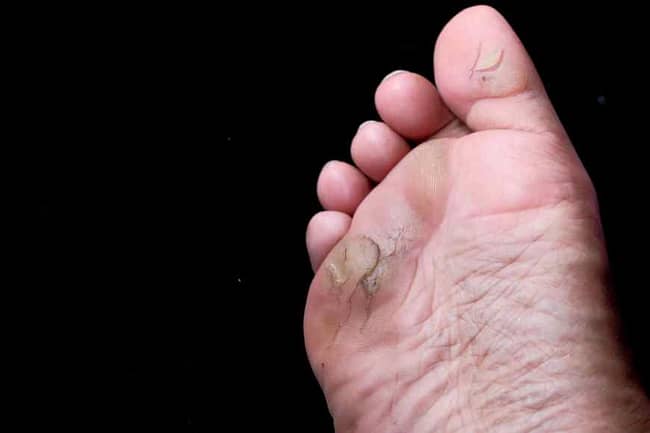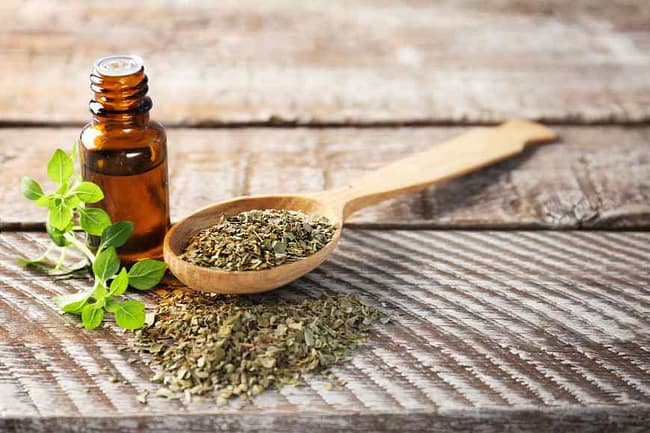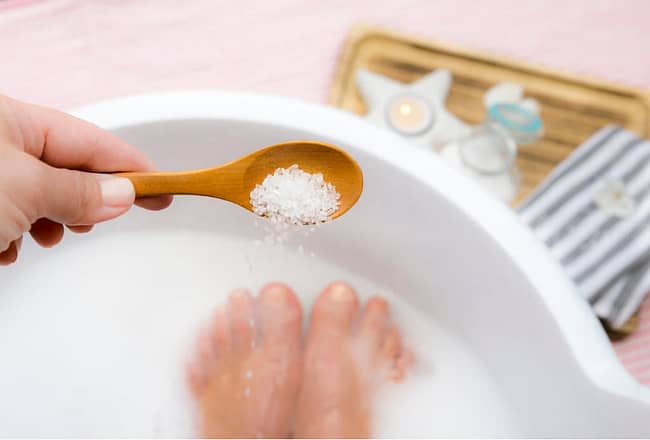Are you tired of dealing with that persistent foot fungus that just won't seem to go away? You're not alone!
Foot fungus is a common infection that can affect the skin, nails, and toes of the feet.
Medically known as tinea pedis, foot fungus thrives in warm, moist environments like locker rooms, swimming pools, and shared showers.
This contagious infection can cause uncomfortable symptoms like itching, redness, peeling skin, odor, and thickened toenails.
While effective over-the-counter medications are available to treat foot fungus, some people prefer natural remedies and home treatments to get rid of this stubborn infection.
Natural ingredients like tea tree oil, baking soda, and apple cider vinegar contain antifungal and antimicrobial compounds that can inhibit fungus growth.
In today's post, we will cover different natural remedies and lifestyle changes you can use to treat foot fungus and prevent recurrence.
Read on to learn how to incorporate essential oils, vinegar, garlic, and UV light into an effective regimen against fungal infections on the feet.
With consistent treatment, you can resolve foot fungus more safely with natural ingredients.
Causes and Symptoms of Foot Fungus
Foot fungus is caused by various fungal organisms that thrive in warm, moist environments. The most common varieties are tinea pedis and onychomycosis.
Tinea pedis (athlete's foot) occurs when fungi called dermatophytes infect the top layers of skin on the feet.

This causes scaling, inflammation, blisters, and skin cracking, especially between the toes.
Athletes' foot fungus is highly contagious and can spread through contact with contaminated surfaces like gym floors, pool decks, and shared showers.
Wearing tight, nonbreathable shoes can create an environment perfect for developing tinea pedis.
Onychomycosis leads to fungal infection of the toenails, making them discolored, thickened, and brittle.
The fungi, scientifically known as dermatophytes, Candida, and non-dermatophytic molds, can infect the nail bed and slowly penetrate the nail itself.
Toenail fungus can be harder to treat and may require oral medications.
In addition to itchy, red, peeling skin and distorted toenails, other symptoms of foot fungus can include:
- Odor or foul-smelling feet
- Burning or stinging sensation
- Cracked skin, especially on heels and soles
- Discomfort when walking
- Debris buildup under nails
Pay attention to any unusual changes to your feet and nails.
Seeking early treatment improves your chances of clearing foot fungus fast.
Over-the-Counter Medications for Foot Fungus
There are many topical antifungal products available over-the-counter that can treat mild to moderate cases of foot fungus.

These are often the first line of defense before considering prescription medications.
Some active ingredients to look for in OTC antifungal creams, sprays, and powders include:
- Clotrimazole
- Miconazole
- Terbinafine
- Tolnaftate
- Undecylenic acid
These formulations work by inhibiting ergosterol, a key component of fungal cell membranes. This essentially cripples the fungus and stops it from spreading.
OTC antifungal products are easy to find at any pharmacy or drugstore.
Some popular brand names include Lamisil, Lotrimin, Tinactin, and Desenex.
Follow the package directions closely when applying or spraying them onto affected areas.
While OTC antifungals can undoubtedly help treat athlete's foot and fungal toenail infections, they may not be strong enough for severe cases.
You should call your doctor if you do not see improvement after using these consistently for 2 to 3 months.
For recurring infections, prescription oral medication may be necessary.
If you have diabetes, nerve damage in the feet, or poor circulation, do not self-treat foot fungus without guidance.
Seek professional care right away before the infection can worsen.
Natural Remedies and Home Treatments for Foot Fungus
Many natural remedies exist for those looking to avoid prescription medications or who have yet to find over-the-counter options effective.
Certain natural ingredients contain potent antifungal and antimicrobial compounds that can help cure foot fungus.
Some of the most popular home remedies for athlete's foot and toenail fungus include:
#1 Tea Tree Oil
Tea tree oil contains Terpinen-4-ol, which gives it strong antiseptic and antifungal properties.

For foot fungus, it can be applied directly to the affected skin in a diluted form.
Adding 10-15 drops to a foot bath and soaking feet for 15 minutes can also help treat tinea pedis.
Studies show tea tree oil is effective against stubborn toenail fungus as well.
#2 Apple Cider Vinegar
The acetic acid in apple cider vinegar creates an acidic environment that prevents fungus from thriving.

Create a foot soak by mixing 1 part vinegar with two parts water.
For toenail fungus, soak a cotton ball and apply it directly to the nails.
The acidic pH softens and penetrates the nail. Taking ACV internally may also combat fungus.
#3 Baking Soda
Baking soda is alkaline, which helps neutralize sweat and skin acids that encourage fungal growth.

Add 1⁄4 cup to a footbath for athlete's foot, and soak feet twice daily.
To treat toenail fungus, make a paste with water and apply it directly. The abrasiveness exfoliates debris under nails.
#4 Oregano Oil
Oregano oil contains thymol and carvacrol, two antifungal compounds that destroy fungal cell membranes.

Use a few drops diluted in a carrier oil to apply to feet.
Add ten drops to a foot bath.
Take care applying to the skin, as oregano oil can cause irritation.
#5 Garlic
Garlic's antifungal compound, ajoene, inhibits the growth and spread of the fungus.

Create a paste to apply to feet, or add crushed garlic to foot soaks.
Eating raw garlic may also help combat foot fungus internally.
Cooking garlic reduces its antifungal potency.
#6 Hydrogen Peroxide
Hydrogen peroxide's bubbling reaction helps remove debris and fungus from under nails.
Dilute with water and soak feet or affected nails for 10-15 minutes.
Rinse and pat dry. Use a few times per week along with topical treatments.
#7 Sunlight
Limited UV light exposure activates the body's vitamin D, which has natural antifungal effects.
Get 10-15 minutes of sunlight on your feet 2-3 times weekly.
There is some common sense here; you don't want to burn your skin.
#8 Coconut Oil: Nature's Healing Balm
Coconut oil is a natural emollient with powerful antifungal properties. It helps keep the skin moisturized while combating the fungus.

To apply coconut oil:
- Gently warm the coconut oil until it becomes liquid.
- Apply a thin layer to the affected areas several times a day.
#9 The Soothing Epsom Salt Solution
Epsom salt is a versatile remedy that can help eliminate foot fungus. It reduces moisture, relieves itching, and soothes inflammation.

To create an Epsom salt foot soak:
- Add half a cup of Epsom salt to warm water.
- Soak your feet for 20 minutes, then dry them thoroughly.
Check with your doctor first if you are on any photosensitizing medications.
Using these natural antifungals consistently and diligently is vital to seeing results.
Be patient, as toenail fungus can take up to a year to fully resolve, even with aggressive treatment.
Lifestyle Changes to Treat and Prevent Foot Fungus
While antifungal treatments are essential, you can also make certain lifestyle adjustments to help treat and prevent recurring foot fungus infections.
Keep feet clean and dry: Wash feet daily with antibacterial soap and dry them thoroughly, especially between the toes.
Change socks twice a day and avoid wearing damp socks or shoes.
Disinfect shoes and socks: Use antifungal sprays or powders in shoes. Wash socks in hot water with antifungal laundry detergent.
Alternate pairs of shoes daily to allow them to air out fully.
Avoid shared surfaces:
- Wear flip-flops in public showers, pools, and locker rooms.
- Disinfect pedicure equipment after each use.
- Don't share towels.
Trim toenails properly:
- Cut nails straight across to avoid ingrown toenails.
- Don't pick at nail beds.
- File down thickened nails.
Allow airflow:
- Go barefoot when possible to expose feet to air.
- Avoid wearing shoes for prolonged periods.
- Wear sandals or open-toed shoes when you can.
Reduce sweat:
- Use foot powder to absorb moisture.
- Wear moisture-wicking socks.
- Change socks halfway through the day if your feet sweat heavily.
Making these easy lifestyle changes reduces your risk of recurrent fungal infections.
Combine them with consistent use of antifungal treatments for the best results.
When to See a Doctor for Foot Fungus
While home remedies can often treat foot fungus successfully, it is essential to consult a podiatrist or dermatologist if:
- You do not see improvement after 2-3 months of home treatment
- The infection is severe with excessive redness, oozing, swelling
- You have recurrent athlete's foot or toenail fungus
- You have diabetes, nerve damage, or poor circulation
- Your nail fungus causes pain or distorts your toenail severely
- You have a weakened immune system or take immunosuppressants
A podiatrist can properly diagnose your type of fungal infection and provide prescription-strength topical or oral antifungal medications.
For moderate to severe toenail fungus, they may recommend:
- Oral terbinafine - Taken for 6 to 12 weeks to treat nail fungus internally
- Ciclopirox - Applied as a medicated nail lacquer for mild infections
- Laser therapy - Uses pulses of strong light to eliminate nail fungus
- Photodynamic therapy - Applies a photosensitizing chemical with LED light
- Surgery to remove nail - For severe or recurring cases, if other treatments fail
Seeing a foot doctor helps rule out other potential causes of symptoms and ensures proper, effective treatment.
This can prevent the infection from worsening and lower your risk of complications.
Do not delay seeking medical care if you have diabetes or nerve damage, as foot infections can become extremely serious.
FAQs (Frequently Asked Questions)
Q: Can foot fungus spread to other parts of the body?
A: Foot fungus can spread to other areas, especially if proper hygiene is not maintained. It's important to treat the infection promptly.
Q: How long does it take for natural remedies to show results?
A: Results may vary, but consistent application of natural remedies can lead to improvements within a few weeks.
Q: Are natural remedies safer than over-the-counter treatments?
A: Natural remedies are generally considered safe; however, if symptoms persist or worsen, it's advisable to consult a healthcare professional.
Q: Can I still exercise with foot fungus?
A: While it's best to avoid activities that exacerbate sweating, you can still engage in light exercise. Just be sure to keep your feet clean and dry afterward.
Q: Is foot fungus contagious?
A: Foot fungus is contagious and can spread through direct contact or contact with contaminated surfaces.
To Sum it Up
Foot fungus like athlete's foot and toenail fungus are very common fungal infections.
They thrive in damp environments like pools, showers, and locker rooms. Symptoms include itchy, peeling skin and thick, distorted toenails.
While over-the-counter antifungal creams and sprays can help mild cases, natural remedies provide another option.
Ingredients like tea tree oil, apple cider vinegar, baking soda, and oregano oil have antimicrobial compounds that fight fungus.
Lifestyle adjustments like keeping feet clean and dry also prevent recurrence.
Prescription oral or topical medications may be necessary for moderate to severe cases that do not improve with home treatment.
See a podiatrist if you have diabetes or circulation issues, a weak immune system, or severely infected nails.
With consistent diligence using antifungal remedies and good foot hygiene, you can overcome stubborn foot fungus.
Pay close attention to any reappearance of symptoms and treat early to avoid complications.
Keeping feet healthy and fungus-free improves comfort and quality of life.


